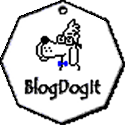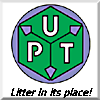SpaceX's Dragon Spacecraft Re-Enters Successfully
- Saturday, December 11 2010 @ 05:37 pm UTC
- Contributed by: masodo
- Views: 3,033

source: http://www.spacex.com
Cape Canaveral, FL [ December 8, 2010 ], SpaceX became the first commercial company in history to re-enter a spacecraft from low-Earth orbit.
SpaceX launched its Dragon spacecraft into low-Earth orbit atop a Falcon 9 rocket at 10:43 AM EST from Launch Complex 40 at the Air Force Station at Cape Canaveral.

The Dragon spacecraft orbited the Earth at speeds greater than 17,000 miles per hour, reentered the Earth�s atmosphere, and landed in the Pacific Ocean shortly after 2:00 PM EST.
This marks the first time a commercial company has successfully recovered a spacecraft reentering from low-Earth orbit. It is a feat performed by only six nations or government agencies: the United States, Russia, China, Japan, India, and the European Space Agency.
It is also the first flight under NASA�s COTS program to develop commercial supply services to the International Space Station. After the Space Shuttle retires, SpaceX will fly at least 12 missions to carry cargo to and from the International Space Station as part of the Commercial Resupply Services contract for NASA. The Falcon 9 rocket and Dragon spacecraft were designed to one day carry astronauts; both the COTS and CRS missions will yield valuable flight experience toward this goal.
View the press kit: Download PDF - 1MB
Top Secret payload revealed. - - - read more
[tag:space news historic science download video]December 9, 2010
For Immediate Release
Contact:
Kirstin Brost, SpaceX
media@spacex.com
SpaceX Reveals Dragon's "Secret" Payload
Hawthorne, CA � Before the successful launch, voyage, and recovery of SpaceX�s Dragon Spacecraft, the first time in history a commercial company has recovered a spacecraft from orbit, reporters were buzzing with news of a �secret� payload, stowed on board.
It was a payload so secret, SpaceXers made it Top Secret (think Val Kilmer 1984, not official US Government).
Top Secret payload, bolted to the floor of the Dragon spacecraft.
So what was inside the mystery package? Their tribute to Monty Python.
A wheel of cheese.
About SpaceX
SpaceX is developing a family of launch vehicles and spacecraft that will increase reliability and performance of space transportation, while ultimately reducing costs by a factor of ten. With the Falcon 1 and Falcon 9 rockets, SpaceX has a diverse manifest of launches to deliver commercial satellites to orbit. After the Space Shuttle retires, the Falcon 9 and SpaceX�s Dragon spacecraft will start carrying cargo, including live plants and animals, to and from the International Space Station for NASA. Falcon 9 and Dragon were developed to one day carry astronauts.
Founded in 2002, SpaceX is a private company owned by management and employees, with minority investments from Founders Fund, Draper Fisher Jurvetson, and Valor Equity Partners. The company has over 1,100 employees in California, Texas and Florida. For more information, and to watch the video of the first Falcon 9 launch, visit the SpaceX website at SpaceX.com.
-----------------------
The SpaceX website presents flight sequence photos for the first flight of Falcon 9. I have converted those individual shots into the animated gif below.
Flight sequence for Falcon 9 Flight 1 as it departs from the SpaceX launch pad at Launch Complex 40, Cape Canaveral, Florida on June 4, 2010 with an official liftoff time of 2:45 PM Eastern / 11:45 AM Pacific / 18:45:00 UTC.
Unless otherwise noted, all image credits: SpaceX.

View from the second stage�s aft-facing camera, at T minus 10 seconds, looking down the length of the Falcon 9 rocket, about 37 meters (120 feet) above the launch pad and main engines. The quick connect panel at left provides propellant, power and communications to the second stage of the vehicle, and disconnects at liftoff. The code at lower left is UTC time.
At one second prior to liftoff, the nine Merlin 1C main engines reach full power, just before the launch mount releases the vehicle for flight.
As it departs from the launch pad, the rising Falcon 9 passes the clamps located at the top of the transporter/erector structure.
Pieces of frost fall from the cryogenic liquid oxygen tanks, and look like fireworks when illuminated by the engines� light. Small white cylinders to left and right are the tops of two of the four lightning towers that surround and protect the launch pad.
The circular ring road that surrounds the launch site recedes as the rocket climbs.
A condensation shock front surrounds the vehicle as it climbs above a thin deck clouds. Insert has view from the ground showing the full body condensation wave. Insert image credit: Ben Cooper, launchphotography.com / spaceflightnow.com
Passing the point of Maximum Dynamic Pressure (MaxQ). From this time onwards, the combination of decreasing atmospheric pressure and increasing velocity will apply less and less force to the vehicle.
The exhaust plume darkens due to decreasing oxygen at this altitude, and expands due to the decreasing atmospheric pressure.
The exhaust plume reaches its maximum size just before first stage shutdown.
After first stage shutdown, the vehicle coasts for a moment before initiating stage separation.
Stage separation begins with the pneumatic pushers pushing the first stage away.
Stage separation exposes the nozzle extension of the second stage Merlin Vacuum engine.
Ignition of the second stage Merlin Vacuum engine.
The Merlin Vacuum fires without visible flame as we cross into the defined edge of space.
As the nozzle extension warms, it softens the adhesive that secures the four segments of the nozzle stiffening ring. They release and fall away, similar to the event on SpaceX�s Falcon 1.
The vehicle remains on the designated flight path and continues climbing towards orbit.
Continuing to climb, the coast of Florida lies below the clouds at upper right.
Reaching orbital altitude and speed. The gold colored plate at left is the interior portion of the quick disconnect panel.
Upon Second stage Engine Cut Off (SECO), the Falcon 9 and Dragon spacecraft qualification unit reach low earth orbit! The vehicle sent this final image just moments before loss-of-signal as it passes over the horizon as viewed from the launch site.
http://www.spacex.com

































 Them All!
Them All!













